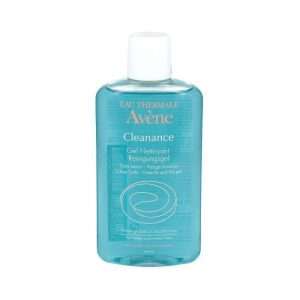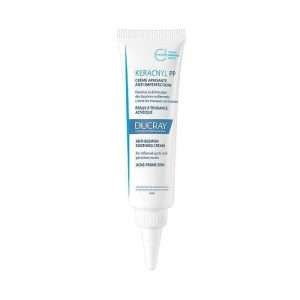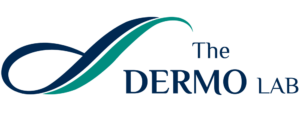
Not all acne cases are the same, but we can all agree that acne is a bad experience in any form. It pops up at the worst possible moment and leaves a mess when it is gone. But knowledge is power, and by simply knowing that there are different types of acne and that each type requires a specific plan of attack gives you a head start on the clear skin curve. Matching them up can seem impossible—and this is why we’re here to help. The Dermo Lab reached out to the dermatologist and cosmetologist Dr. Nesreen Farouk to help you learn more about the different types of acne and how to treat them.
How to know which type of acne you have?
Acne vulgaris is the medical name for common acne. The areas most at risk are the face, chest, shoulders, and back. Acne is classified into one of two categories: inflammatory acne and non-inflammatory acne. Understanding which category you fall into is the first step to taking control of your complexion.
1- Non-Inflammatory Acne: According to Dr. Nesreen Farouk, non-inflammatory acne does not cause swelling and is defined by open and closed comedones (clogged pores).
- Blackheads: Blackheads are open comedones on the surface of the skin. They are filled with excess sebum and dead skin cells.
- Whiteheads: Comedones that remain closed on the surface of the skin are called whiteheads. This occurs when sebum and skin cells prevent a blocked hair follicle from opening.
2- Inflammatory Acne: Dr. Nesreen Farouk states that inflammatory types of acne are red, swollen, and inflamed. The four main forms of this subset are papules, pustules, nodules, and cysts. However, they all have different identifying characteristics.
- Papules: Acne papules are inflamed pimples that look like red bumps on your skin. These are painful clogged pores without pus.
- Pustules: Acne pustules are typical pimples with a white head that contains pus, dead skin cells, and excess oil.
- Nodules: Acne nodules are large, inflamed lesions that are hard and painful to the touch. While pustules and papules form on the surface of the skin, nodules are found deeper in the skin.
- Cysts: Cystic acne is the most painful form of all types of acne. Cysts are large, soft, fluid-filled bumps under the surface of the skin.
Which type of acne is more severe?
Some patients have mild acne, while others have more severe forms.
1- Mild acne
Acne is considered “mild” if you have fewer than 20 whiteheads or blackheads, fewer than 15 inflamed bumps, or less than 30 lesions in total.
Whiteheads and blackheads are mild forms of acne. According to Dr. Nesreen Farouk, it takes between one week and three months to cure these comedones.
If you have 20 to 100 whiteheads or blackheads, 15 to 50 inflamed bumps, or 30 to 125 total lesions, your acne is classified as moderate. It may take several weeks to see improvement, and your acne may worsen before it gets better. Papules and pustules are a moderate form of acne.
3- Severe acne
People with severe acne have multiple inflamed cysts and nodules. Acne can turn deep red or purple and often leaves scars. Dr. Nesreen Farouk points out that cystic and nodular acne are the most severe forms of acne.
Does location help identify the different types of acne?
Location matters. A blemish can occur in any pore on your face, and pimples are not limited to one spot. While all types of breakouts can appear just about anywhere, some areas are more prone to certain blemishes than others. “Blackheads” and “whiteheads” tend to occur on the chin, forehead, upper cheeks, and entire nose, whereas papules and pustules can appear anywhere on the face. In contrast, with hormonal acne, cysts are usually found on the chin, cheeks, and jawline.
You probably have more than one type of acne. Breakouts like company, which is why you probably have a mix of several types of blemishes. Just like whiteheads and blackheads, nodules and cysts often appear together.
How to establish the best possible treatment plan for your own skin?
To achieve clearer skin, it is useful to know the types of blemishes you’re dealing with. Each type requires a different treatment. Thus, understanding your imperfections is the first step to banishing them.
Dr. Nesreen Farouk suggests the following three steps to keep your skin clear:
1- Remove your makeup before going to sleep
It is very important to remove your makeup before going to bed, as makeup can cause significant damage to your skin overnight. Your skin renews itself as you sleep, and by leaving makeup on, you are preventing that renewal.
2- Use a cleanser adapted to each skin type
For sensitive skin, we recommend Cleanance Cleansing Gel from Eau Thermale Avène, the famous French dermo-cosmetic brand that formulates products for the most sensitive skin types. Gentle yet purifying, this cleansing gel cleanses thoroughly and reduces excess sebum for an immediate and long-lasting mattifying effect. Ideal for the face and body.
For an extra helping hand in the fight against imperfections, use Eau Thermale Avène Cleanance Comedomed. It is a highly concentrated, fast-acting formula with sustainable clinical benefits and dual-targeted action. It effectively reduces and limits the reappearance of blemishes and blackheads and regulates the hyperproduction of sebum.
Dr. Nesreen Farouk points out that products containing oats can help fight acne. This is why we recommend Phys-AC Foaming Gel from A-Derma, the world-renowned brand for natural skin care products. With Rhealba® Oat Plantlet extract, this soap-free cleanser gently cleanses and purifies acne-prone skin without drying it out. Result: the skin is clean, refreshed, mattified, and delicately perfumed.
After cleansing your face, apply A-Derma Phys-AC Global, a cream with a fresh, light, and comfortable texture, ideal for sensitive skin with acne tendencies. It is a complete care that reduces the excess of sebum, the opening of the pores, and the redness related to the irritations of the skin. 2 in 1, the cream hydrates the skin without greasing it for maximum comfort.
Another highly recommended cleanser is Keracnyl Foaming Gel from Ducray. This cleanser is enriched with Myrtacine® to target pimple-causing bacteria. It gently cleanses, acts on acne lesions, and soothes the skin.
Following the face wash, apply Ducray Keracnyl PP Anti-Blemish Soothing Cream, a sebum-regulating treatment that controls blemishes and helps eliminate them. It also improves the tolerance of topical medication treatments, while limiting the appearance of residual marks.
3- Use sunscreen every day
A good sunscreen protects the skin without aggravating breakouts while leaving a mattifying finish. It is therefore essential to wear sunscreen every day, especially when you have acne-prone skin. The Very High Protection Fluid SPF 50+ from Eau Thermale Avene meets all the requirements: efficacy, quality, pleasure of use, and reliability. It also has a light nude skin feel texture and offers a fast absorption.
















